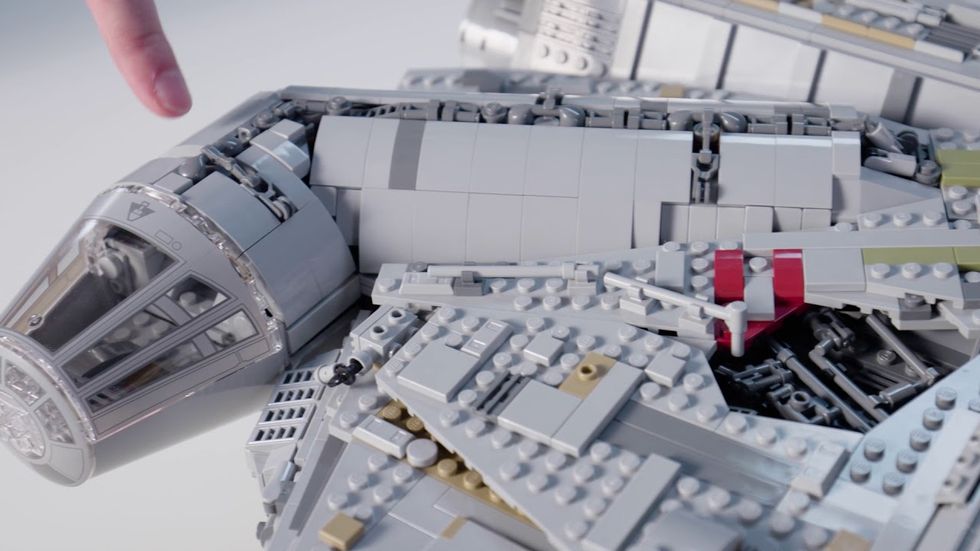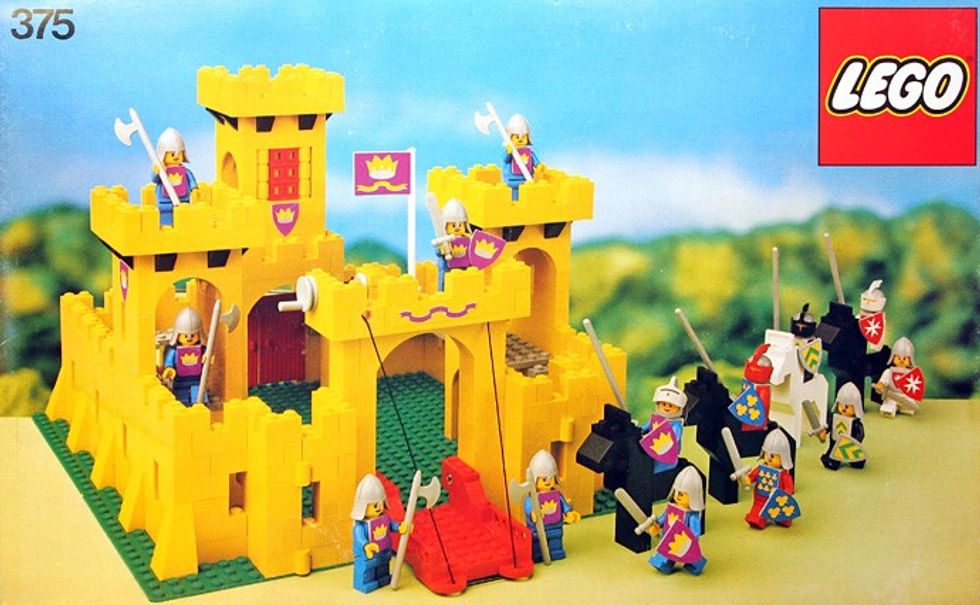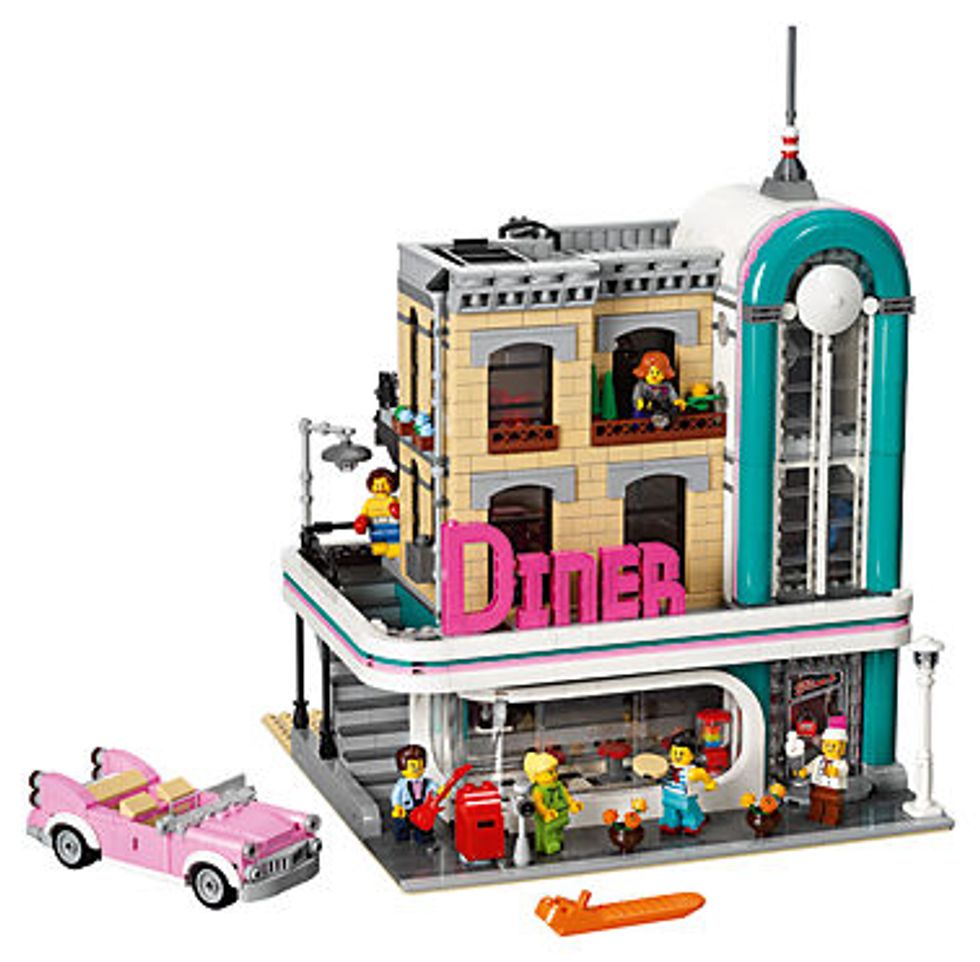This year marks the sixtieth anniversary of the Lego brick, with the patent officially being issued on January 28, 1958. Since then, the company has been pushing the envelope of possibilities for a relatively simple toy. Of course they still produce their classic brick boxes, as well as the near-required fire trucks, police cars, and buildings. These individual sets are sold as part of an overall “theme,” some themes lasting longer than others. I'm not going to go into every single theme Lego has ever produced, because really, we'd be here forever – there's countless one-offs (Yellow Submarine), limited run sets, and even some regional exclusives that were only a couple of sets as a test market. Instead, we're going to take a look at some of the most iconic themes, and what their effect on the brand is today.
Technically
speaking, the longest running theme is Lego City,
with the earliest versions of the idea being based around the
1950s-1960s “Town Plan,” which mostly consisted of small
buildings that were a little bit bigger than model train scale –
minifigures wouldn't come until the late 1970s. These were just
released as Lego sets, no official theme to speak of. Slowly, Lego
added more and more to their line, including vehicles and larger
buildings, adding in the previously mentioned minifigs and increasing
the size and scope of the system. The daily life sets were organized
into the theme titled Town in
1978. Not long after, the Fabuland line
was introduced, which was a similar concept – vehicles and houses
for figures – but the figures themselves were larger and used
cartoonish animal heads, thus appealing to a younger audience.
Different sub-themes came in as time went on, covering a range of
city locations and designs, like a “spring break” type line. Now,
the Town line lives on
as Lego City, and once
again involves a large range of vehicles and sets for kids of all
ages, from mining teams to police stations to camping, and everything
in between.
In
addition to Town, 1978
also saw the release of Castle and
Space, both of which
lasted in some way until around 2014.
Both lines were an instant hit, allowing children to wage medieval
battles and intergalactic expeditions. These themes, much like Town,
used minifigs and had a wide price range of sets, so that there was
always an affordable set for families to purchase. The Castle
line included large expansive
castles and battlements, but also smaller sets of a handful of
knights and some trees or wagons, and Space covered
everything from a massive base for astronauts to moon buggies and
gliders. Pirates came
not much long after that, and gave kids large scale pirate ships and
soldiers to fight each other on the high seas. This theme also
introduced the first peg leg piece, which would turn out to be the
first non-generic style minifig part. As with Castle and
Space, this line
covered a wide price range, with small sets consisting of a single
pirate and some loot, to large bases for soldiers or island
adventures. These late 70s-80s themes are still big collector's
items, and the fans can often be seen online discussing when Castle
and Space are
making their triumphant return. Pirates
most recently was brought back in 2015 as a “Juniors” line,
targeted to younger children, though a remake of the large ship was
released in the main “system” line, while Castle and
Space were combined in
2015 to create Nexo Knights,
which ended in early 2018.
Fast
forward a bit, to what was once a controversial idea and now is one
of the top selling products the company has every produced, Star
Wars. In 1999, with the
then-upcoming Prequel Trilogy being the talk of online chatrooms and
playgrounds, Lego and Lucasfilm partnered to release sets based on
both the Original Trilogy and The Phantom Menace
– and surprisingly, many fans of Lego were concerned the company
would switch to just licensed out sets and basically leave the others
out to dry. Rather, the two ran side-by-side, and Star Wars
quickly gained the respect from the Lego community. These sets are
notable for often introducing new pieces, new styles of building, and
even changes to minifigures – Yoda was the first to have the short
leg piece, Jar Jar Binks was the first to have a sculpted head unlike
a normal minifig. The success of Star Wars
led to Lego licensing other properties, such as Harry
Potter and DC and Marvel Super
Heroes. The superhero sets mark the first time since Mego's iconic
toys that a company was producing DC and Marvel toys that are
designed to be played with together – though a Batman focused line
began in 2006, Marvel joined in the revival of the superhero theme in
2012. In 2017, the largest Lego set ever was released, being a
to-scale replica of the Millennium Falcon,
which sold out in record time.
We cannot forget the adult-target lines. The Creator Expert sub-theme of “Modular Buildings” was launched in 2007 as a high-piece count, fully minifig scale building that used several techniques and parts that are uncommon in the usual Lego set. The first release was “Cafe Corner,” and proved to be a success, though the building itself lacked a detailed interior. Fans suggested adding features to the inside of the buildings as well (which would begin with the third installment, “Green Grocer”), and the line grew with an annual release. The architecture is designed to be sometime between the 1930s and 1960s, with such sights as an upscale restaurant, a movie theater, a detective office, and most recently, an American style diner. The line is already just as collectable as the classic themes, with sealed boxes of the retired sets going for hundreds, if not thousands of dollars. Essentially, this and the Star Wars “Ultimate Collector Series” are the “adults” Lego (from part count to the price), thus making good on their “4 -99” age range. Some sets may be made with older kids in mind, but if you put your mind to it, anyone can build any set – even if it needs some help.
I did purposely skip over some important themes like Studios, Duplo, Ninjago, and Bionicle. I brought it down to the most famous and the most collectable within the Lego community. And besides, Bionicle deserves an in-depth look on it's own, so stay tuned for that. But nevertheless, Lego themes allow for kids and adults to get the things they want to see as a brick-built set, as well as get minifigs of Darth Vader, Iron Man, firefighters, rock stars, etc. And there is nothing wrong with buying Lego sets as an adult – there is always something they produce that reaches out beyond the kid toy market. Themes help to give variety and organize the production, but also help collectors and fans find exactly what they're interested in. In the 1980s, it was knights and space travel and pirate voyages. Now, kids want sprawling cityscapes, X-Wings, and the Avengers. That's just how things are, no problem with that. Especially when the company makes products that can be used together and played with as one big set, generations can come together in the living room and play together. Not too many toys have that luxury.



















